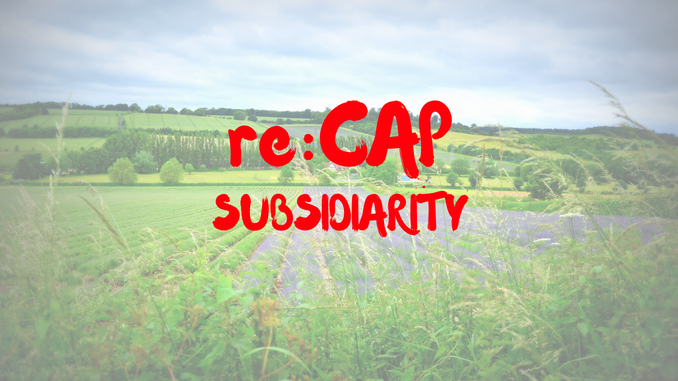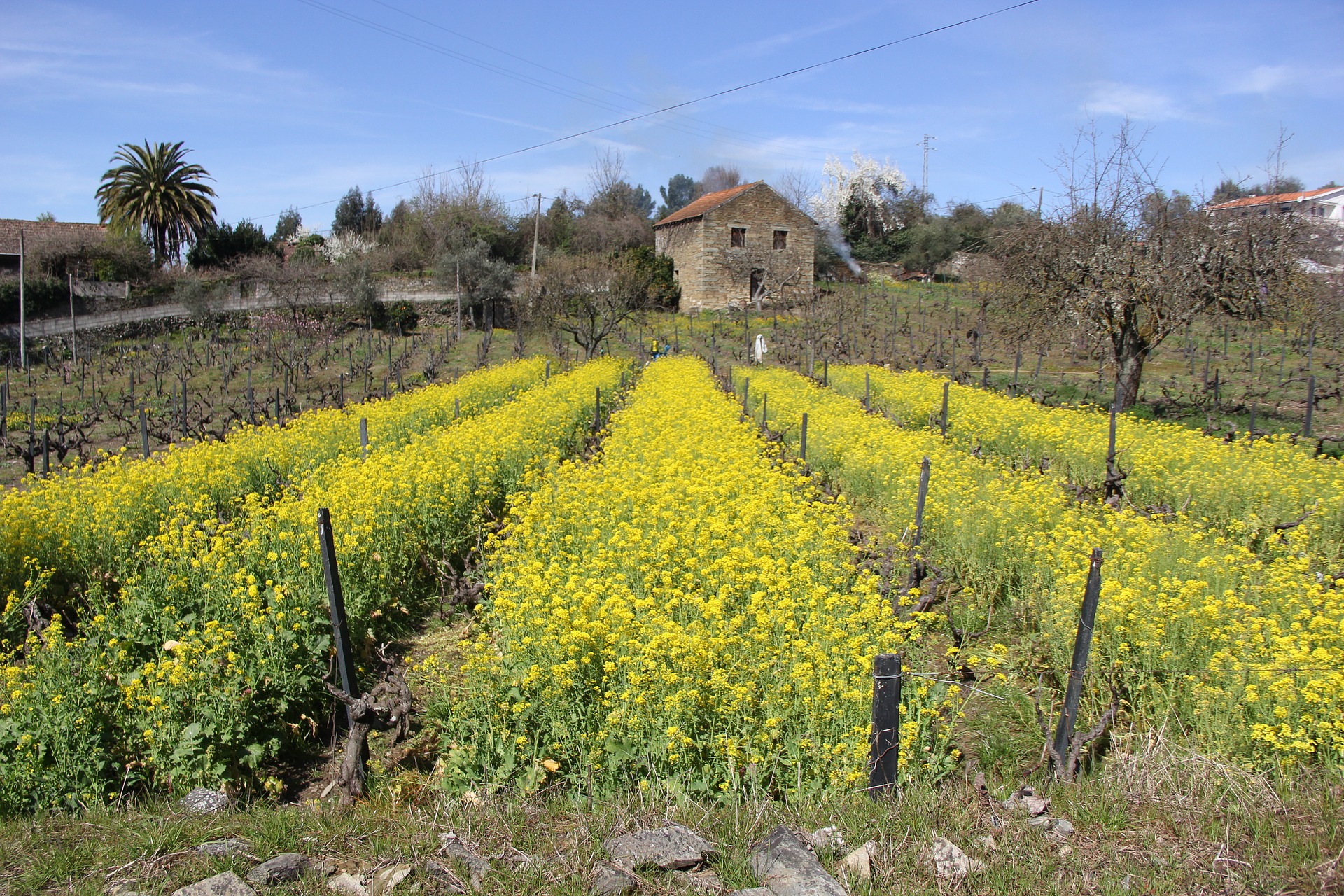
Beyond the reports, declarations and conferences, ARC wants to know where the key NGOs, farmer organisations and civil society groups stand on the particularly pertinent CAP questions. Accordingly, ARC has reached out to some of the key organisations and individuals involved to ask them. The result? Our short new re:CAP series. In this series, we ask a range of stakeholders seven questions. We wanted to know, specifically:
- The organisations’ position on capping direct payments
- Whether specific support should be given to young farmers, new entrants and first hectares and whether any measures should be coupled
- How budgetary shortfalls for Pillar II should be compensated and whether co-financing should play a role
- Whether rural development and farm support should remain separate policies
- The potential role of risk management tools as part of rural development measures
- How agri-environmental measures should be stimulated and supported
- How increased subsidiarity should be negotiated and enforced
Beginning at the end of these seven quesitons, the next CAP will likely give more power to Member States. This occurs under the principle of subsidiarity, in which the EU acts only when a particular action cannot be appropriately achieved by individual nations. This means countries will have more decision-making control over what the CAP looks like and how its goals are achieved. But will this result in a renationalisation of CAP? This raises key questions about EU-level enforcement. We asked Christian Rehmer (BUND, Friends of the Earth Germany), Aurélie Catallo (Pour Une Autre PAC), Ulrich Jaspers (AbL and Die Verbände-Plattform) and Ariel Brunner and Harriet Bradley (BirdLife) for their ideas.
Question: How should local, regional, national and EU levels balance? How should measures, decided on by Member States on principles of subsidiarity, be enforced?
Rehmer, BUND:
Renationalising CAP will possibly even hinder achieving common EU objectives and targets. BUND wants the legislative proposals to set clear and high standards on the European aims. We want ringfencing for climate, environment, etc.

Catallo, Pour Une Autre PAC:
- The European Commission must have the means to sanction member states that would not fulfill the requirements of their CAP strategic plan.
- Definition of strong common goals and intervention schemes at the European level
- In France, no management entirely taken on by the Regions for Pillar II: it is incompatible with the principle of territorial equality. There should be a national framework ensuring a homogeneous, long-term and ambitious co-financing of the Second Pillar’s measures in all regions.
Bunner and Bradley, BirdLife:
A progressive CAP would leave more freedom to member states on the ‘how; but be much stricter on the ‘what.’ The Commission should be able to hold member states to account, otherwise there will be no delivery and a race to the bottom on perverse subsidies. This is the most likely outcome of the current proposal which is heavy on subsidiarity and very light on accountability. There is a huge risk that this will not only lead to massive environmental destruction, but also to an implosion of the CAP and maybe even of the common market in agricultural products.

Jaspers, AbL and die Verbände-Plattform:
From the March 2018 statement of the Verbände-Plattform on the Commission Communication (translated by Helene Schulze)
In order for the new CAP to make a real contribution to the achievement of the named objectives, measurable criteria or indicators are needed, which must be used both in the approval and in the ongoing adaptation of the CAP Strategic Plans. Indicator management is mentioned in the Commission communication, but it remains open what kind of indicators should be used, which is crucial. The indicators must be meaningful in relation to the objectives, i.e. they must show the real situation in the Member States and regions and whether and how they are approaching the objectives. This is the only way to express the European added value of CAP-funded measures.
All of the above objectives for the new CAP (with the exception of animal welfare) are already subject to regular EU-wide impact indicators. Even if the surveys are not annual for all impact indicators and the results are not yet available until one or several years later, they must nevertheless become a central steering instrument of the new CAP in the relationship between the EU and Member States or regions.
The discussion between the Commission and the Member States to date, on the other hand, suggests that it is not the impact indicators but above all so-called output and result indicators[1] that are to be used, whereas the impacts are only to be used for ex-post evaluation after the end of the seven-year funding period, i.e. from 2028. The Verbände-Plattform rejects that.
The impact indicators must be used at the beginning of the funding period to assess the size of the challenges in the individual Member States and to assess the strategic CAP plans submitted by the Member States for approval as to whether the measures contained therein are appropriate to improve the situation in the necessary timeframes. In addition, the impact indicators should be used as promptly as possible during the funding period to assess success. The EU Commission must ensure that the member states publicly report annually on the achievement of the targets.

The ministries responsible for environmental and animal welfare must be involved on an equal footing both in the selection of indicators and in the selection of funding measures and requirements. The ministries responsible for development policy should also be involved to ensure compliance with the convergence objectives.
At Member State level, extensive consultation with all stakeholders, including environmental, nature conservation, agricultural, animal welfare, development policy and consumer protection organisations, must be legally binding and contain clear minimum standards set at EU level.
Missing target levels must have consequences.
So far, indicators in the Member States are only used for rural development policies or regional programmes, while direct payments are designed and spent independently. This was already wrong so far, because it indirectly assigned rural development the function of compensating for harmful developments in the market organisation and direct payments.

The new support system proposed by the EU Commission in the Communication now provides – correctly – for a common strategic CAP plan for all CAP support measures of a Member State. Accordingly, all measures and payments contained therein must also be subject to the above objectives.
This means that the measures financed from previous direct payment funds must also be adjusted accordingly if agreed indicator values for “milestones” or partial steps are not reached. These funds must also be used to reward socially desirable services for environmental, nature, climate and animal protection. This also applies to measures to promote research, innovation, technology (including digitisation) and advice, which the EU Commission emphasises in the Communication.

The pressure in the Member States to set targets as low as possible and in particular to keep the environmental and animal welfare requirements of the measures as low as possible, is great – it is by no means smaller on the ground than at EU level. The more responsibility the new CAP transfers to the Member States for the concrete design of measures, the more the EU Commission must be given the opportunity to build up effective counter-pressure if agreed objectives are not met.
The EU Commission must therefore be given clearly regulated instruments for sanctioning the Member States. This must also include a possible withholding or freezing of EU funds in relation to the Member States. If EU payments to a Member State are reduced, the Member State must be obliged to make the reduction in the measures which contribute least to achieving the relevant objectives; the positively effective measures must be exempted from cuts, but must also be strengthened financially.
[1] Output indicators indicate where the money has gone (e.g. number of farms, hectares or investments). Result indicators indicate what has been achieved directly with the money (e.g. the size of animals kept in subsidised animal-friendly converted barns).
The re:CAP series continues with further questions in the coming weeks.
re:CAP | A Series of Specific EU Farm, Food and Rural Policy Questions





